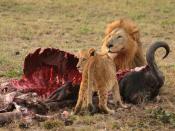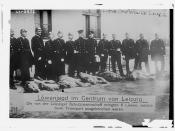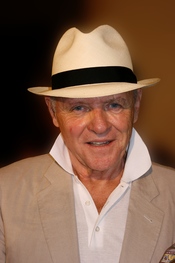The image of the lion in western society: king of the jungle or endangered species?
The lion (Leo or panthera leo) , the large cat of the family Felidae, the second largest of the big cats (after the tiger), has always captured our imagination. For centuries it has been the symbol of power, strength, pride, courage and royalty. It is one of the main motifs throughout heraldry. Many royal and powerful families have the lion on their crests. The lion gained its throne in Aesop's fables as 'king of the beasts', and today royal supremacy is still mirrored in the British Royal Coat-of-arms (the lion and the unicorn), which is spread throughout the Commonwealth. The Holden car plate is "based on the Egyptian-style Wembley lion symbol of London's 1924-1925 British Empire exhibition." The Metro Goldwyn Mayer (MGM) trademark, the home of the roaring lion, is the hallmark of Hollywood, symbolic of filmmaking fame and power.
The international Lions Rotary club takes 'pride' in helping others; their emblem of two lion heads, one facing east and one facing west, carries the motto "we serve". In Adelaide, the ING advertisements on television endorsed by the Scottish comedian Billy Connolly, offer their services, using the lion symbol. ING (International Netherlands Group), one of Australia's leading fund managers and life insurers, thus promises to 'protect' our hard-earned savings. The University of Adelaide proudly displays on its campus a stone statue of a lion holding a crest, an open book under the constellation of the Southern Cross, symbolising the power of learning/higher education. At the entrance of the Stamford Hotel in Adelaide, two huge brass lion statues welcome visitors, promising a 'royal' reception and accommodation. The hotel belongs to the international chain of luxury hotels named after Sir Stamford Raffles (1781-1826), a British administrator, who...


